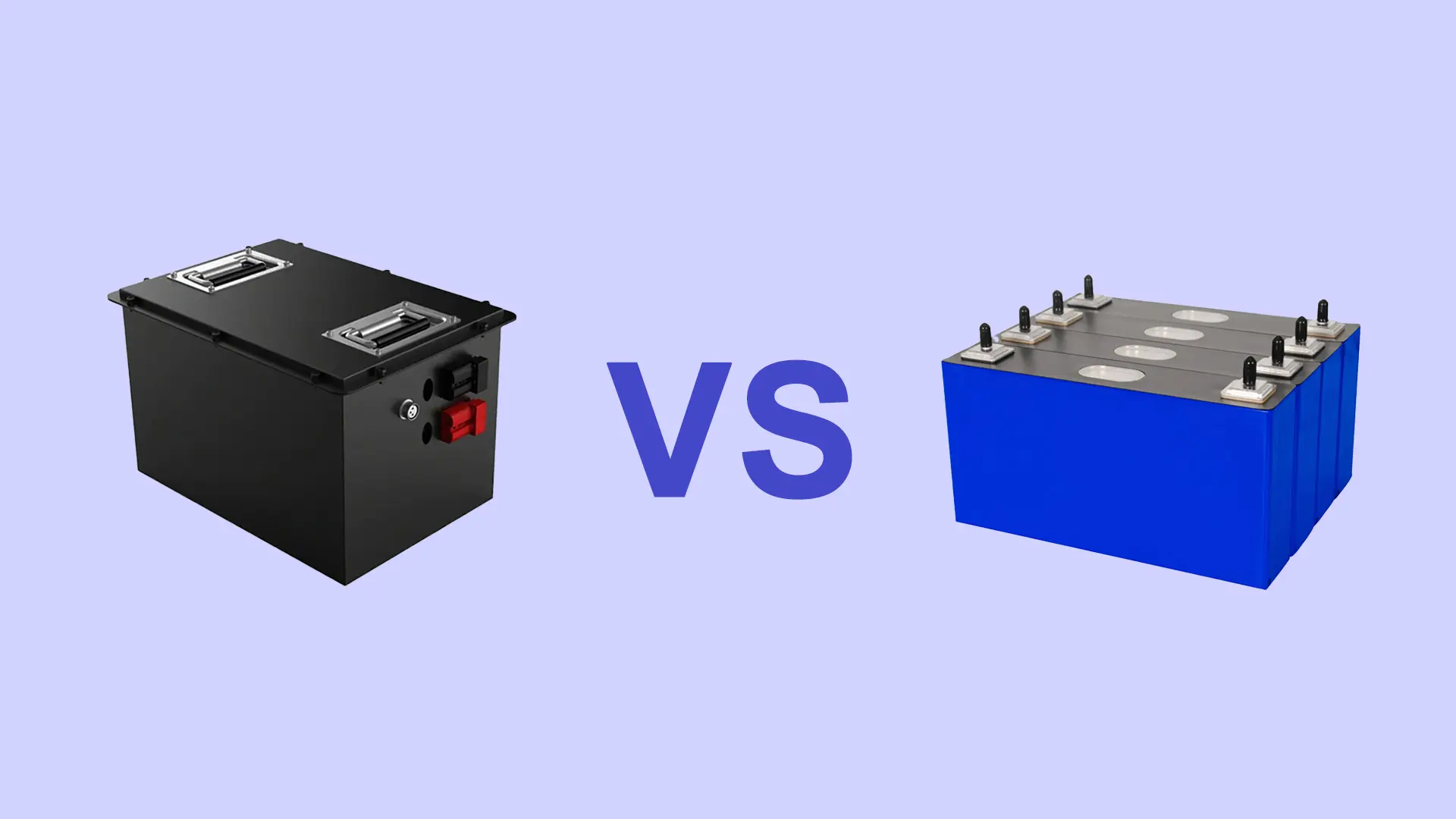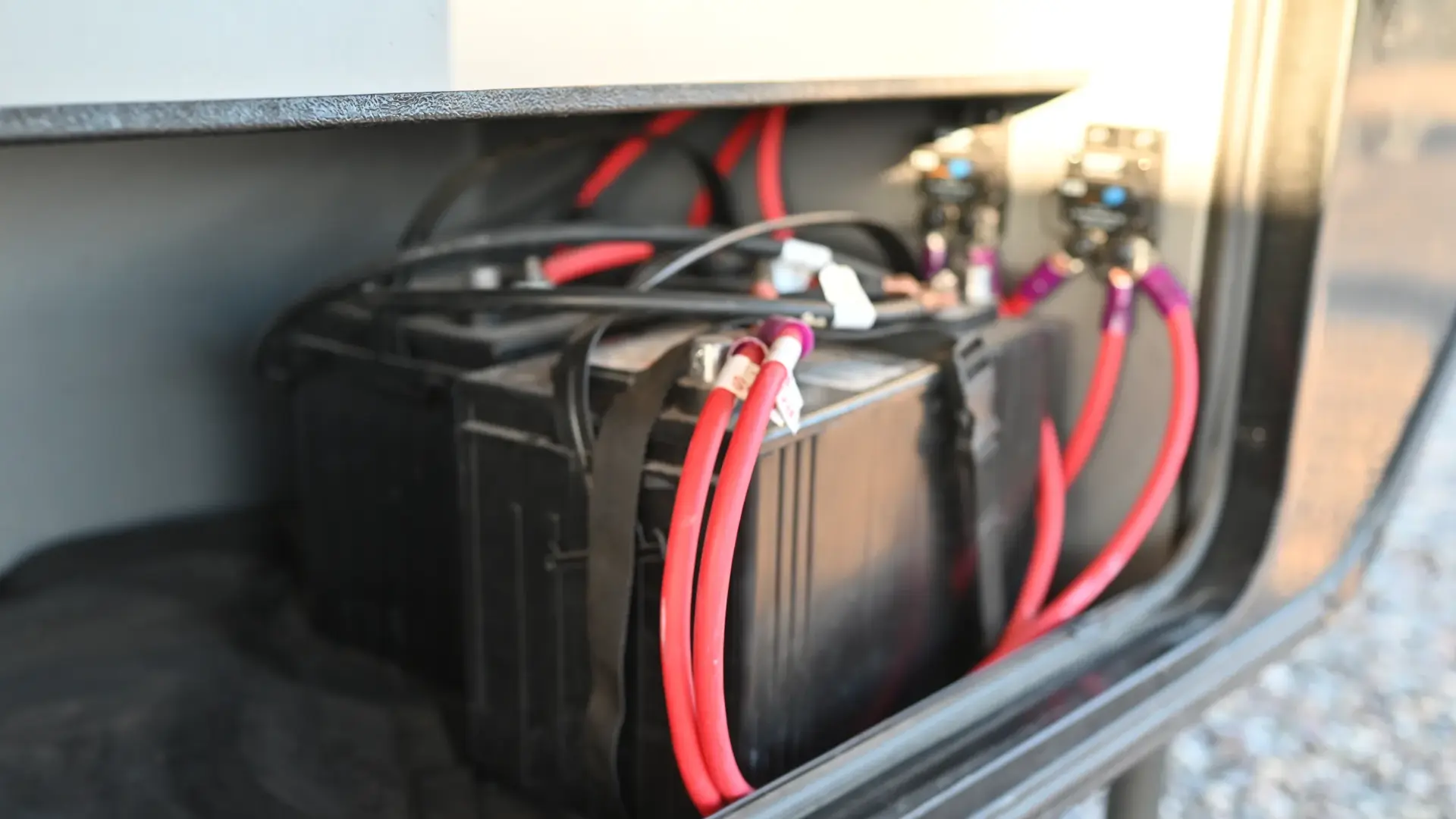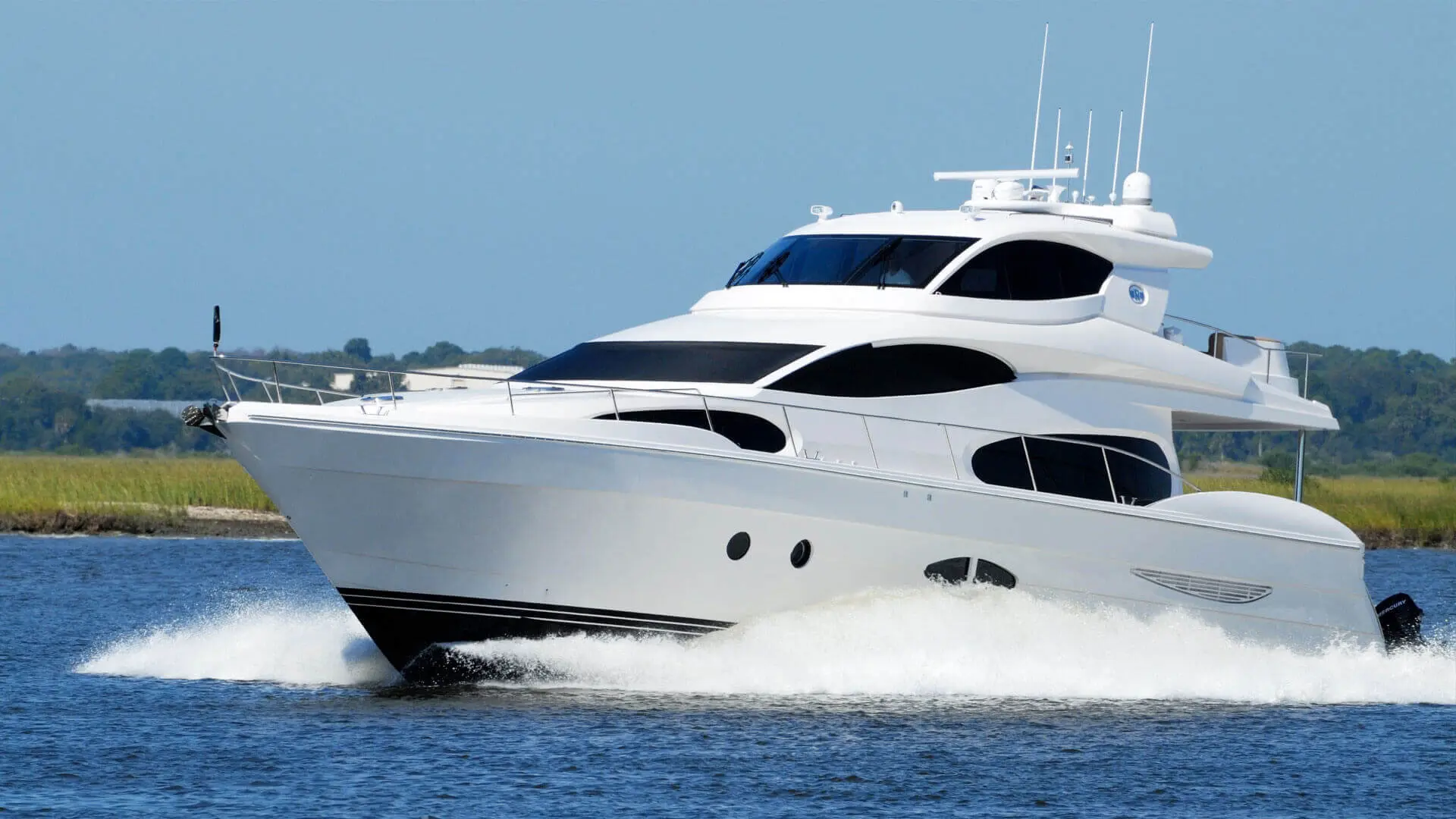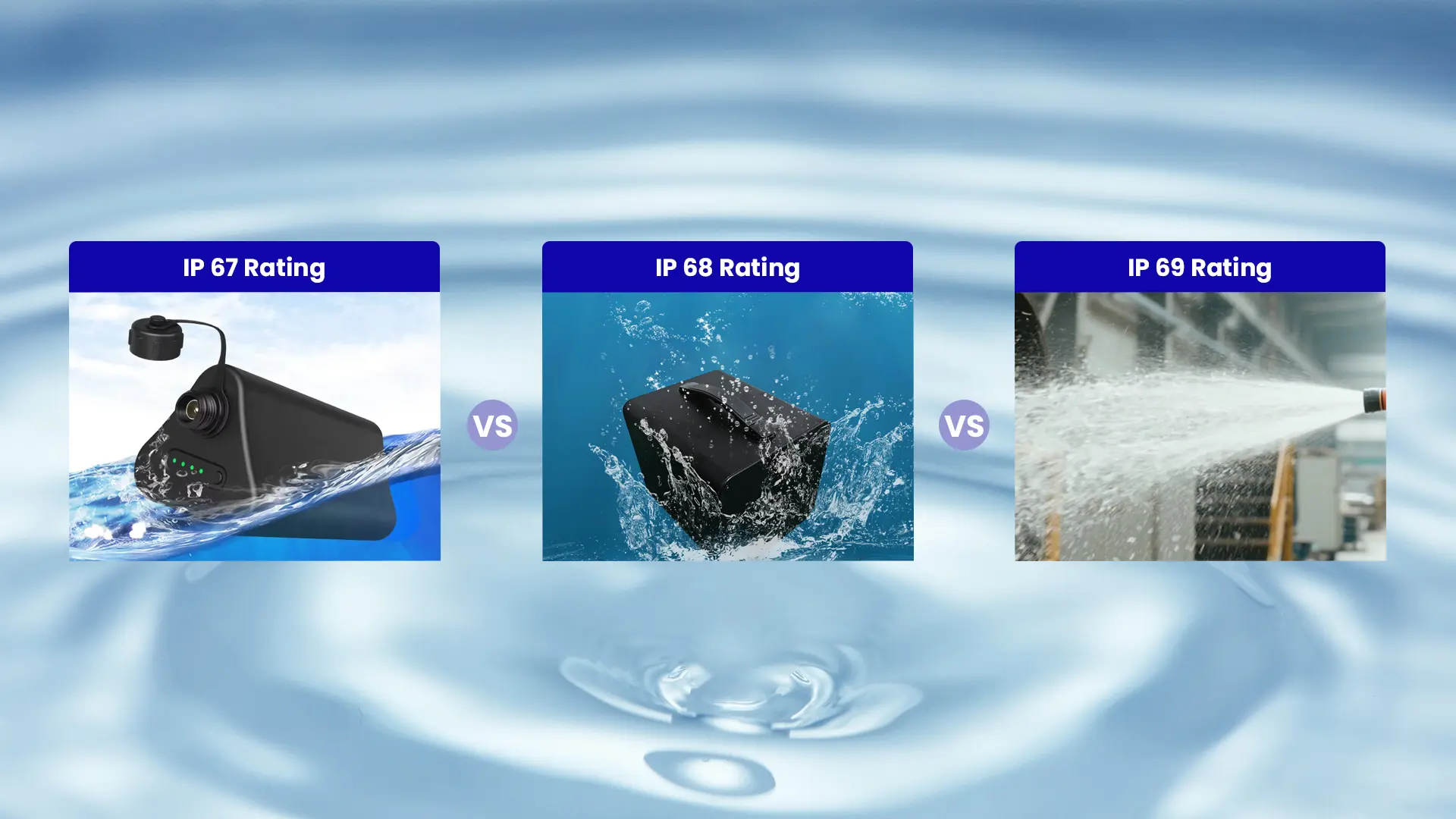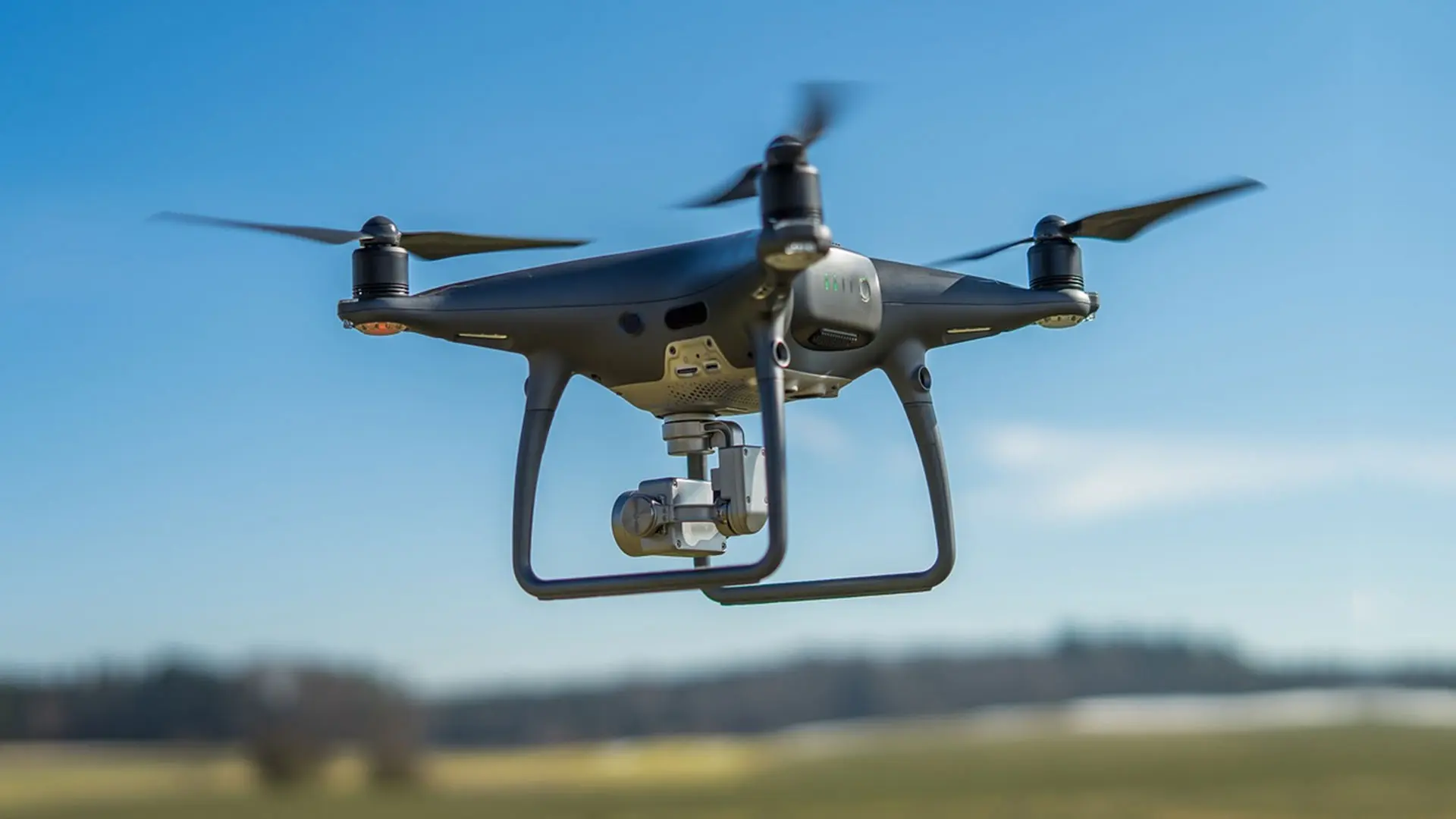NMC(Nickel Manganese Cobalt) battery is a lithium-ion battery whose cathode material is composed of a mixture of nickel (Ni), Manganese(Mn), and cobalt (Co). This battery boasts superior energy density, allowing it to store much energy in a compact size. Hence, it is widely used in EVs, robotics, and marine fields. People often compare NMC and LFP batteries, and we’ve also written a detailed comparison. In this article, we delve into the types, safety, performance, usage environment, and market trend of lithium NMC batteries. Let’s start!
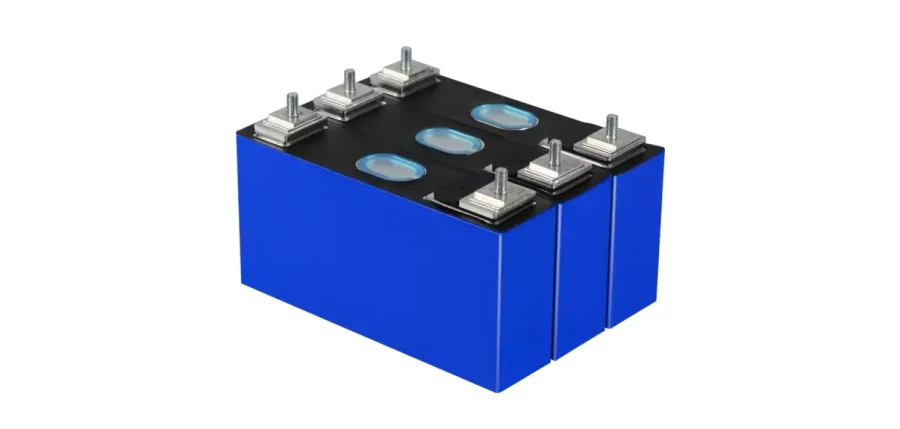
What does NMC stand for in batteries?
NMC is short for lithium-ion batteries that use nickel manganese cobalt oxide (LiNiₓMnₓCoₓO₂) as the cathode material (also known as NCM). The name comes from the combination of the three metals: nickel (Ni), manganese (Mn), and cobalt (Co). By adjusting the ratio of these elements (such as NMC 111, NMC 622, or NMC 811), manufacturers can balance the battery’s energy density, thermal stability, and cycle life.
The Composition of NMC Batteries
Cathode: The NMC battery cathode is made of compounds of nickel (Ni), cobalt (Co), and manganese (Mn). Different ratios of Ni, Co, and Mn affect the battery’s energy density, thermal stability.
Anode: Most NMC batteries use graphite as the anode, which has excellent lithium insertion properties to stably store and release lithium ions.
Electrolyte: NMC lithium-ion battery uses lithium salt (such as LiPF6) as electrolyte, which allows lithium ions to transport between electrodes to ensure the smooth charging and discharging reaction
Separator: NMC battery uses polypropylene (PP) and polyethylene (PE) microporous membranes for isolating the electrodes. It helps prevent short circuits while allowing lithium ions to pass through.
NMC Battery Material
Ni, Mn, Co, and Li are major materials of NMC batteries and play a critical role in battery performance.
Nickel (Ni) increases the energy density and endurance of batteries.
Manganese (Mn) enhances safety, battery stability while lowering costs.
Cobalt (Co) improves cycle life and maintains overall structural integrity.
Lithium (Li) acts as the primary charge carrier within the battery.
Carefully choose the ratio of Ni, Mn, and Co to seek a balance of energy density, long cycle life, safety, and affordability. Higher nickel content increases capacity but reduces stability, requiring optimized designs.
Different NMC Battery Types
NMC batteries (nickel-manganese-cobalt oxide lithium-ion batteries) are classified into different types based on the ratio of nickel (Ni), manganese (Mn), and cobalt (Co). The main models and their features include:
NMC 111
- Ratio: Ni:Mn:Co = 1:1:1
- Features: Offers a balance between energy density and safety, with stable cycle life (around 1,000–2,000 cycles). However, the energy density is relatively low (about 160 Wh/kg).
NMC 532
- Ratio: Ni:Mn:Co = 5:3:2
- Features: Increases energy density to around 180 Wh/kg, with better safety than high-nickel types. Often used in cost-sensitive electric vehicles.
NMC 622
- Ratio: Ni:Mn:Co = 6:2:2
- Features: Energy density exceeds 200 Wh/kg, striking a balance between performance and cost. Once a mainstream choice for EV batteries.
NMC 811
- Ratio: Ni:Mn:Co = 8:1:1
- Features: Provides the highest energy density (about 250 Wh/kg) but requires enhanced thermal management to address high-temperature stability issues. Widely used in premium EVs (such as the Tesla Model 3).
Trend: The industry is moving toward high-nickel chemistries (such as the NMC 9 series) to boost driving range. However, safety concerns remain and may be addressed with innovations like solid-state electrolytes.
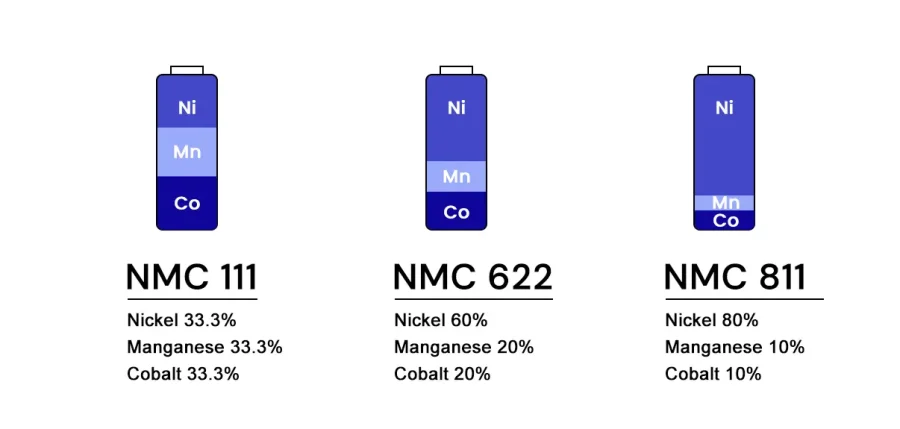
NMC Battery Voltage and Discharge Curve
Voltage, capacity degradation, and discharge behavior are three vital factors that influence lithium NMC battery lifespan. They affect the battery’s lifespan, its energy storage capacity, and the consistency of its power output over time.
Voltage and Voltage Chart
NMC battery has a 3.7V nominal voltage, operates within a voltage range of 3.0V to 4.2V per cell. This voltage range enables efficient energy storage and discharge, resulting in superior energy density. The following voltage chart for li NMC battery shows the full charge (4.2V) to discharge (3.0V) range, demonstrating energy efficiency throughout the battery’s lifespan.
Discharge Curve
NMC battery discharge curve shows a flat voltage profile, meaning the battery maintains a stable voltage for a longer time before dropping off sharply. This feature provides consistent power output during operation. Understanding the discharge curve helps estimate remaining capacity, which is essential for a vehicle’s range and energy storage.
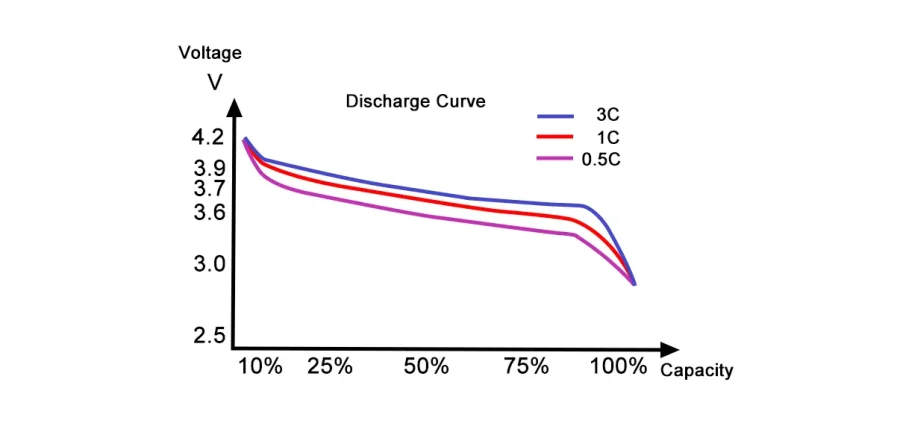
NMC Battery Energy Density and Cycle Life
Energy Density
NMC battery boasts high energy density with compact size, enabling it to support a longer driving range. They achieve 150–250 Wh/kg depending on the battery model, cathode material ratio, such as NMC 532, 622, 811. NMC 811 contains higher nickel content, resulting in a higher energy density, but requires heat and degradation.
Cycle Life and Charge Cycle
NMC battery achieves 1000-1500 cycles, while some advanced technologies reach 2000-2500 cycles. High temperature, excessive charging and discharging, and frequent charging accelerate battery aging and capacity degradation. Therefore, when taking slow charging, set the optimized charging range to maintain battery cycle life.
NMC Battery Safety
Are NMC Batteries Safe?
NMC battery safety is enhanced when properly integrated with smart protection technology, such as a battery management system and high-temperature-resistant battery technology. However, its cathode material contains active metals such as nickel and cobalt, and has a low thermal decomposition temperature. It is prone to thermal runaway if overcharged in high-temperature conditions.
NMC Battery Fire Risk
Ensuring safe charging and discharge limits and high-quality NMC cells minimizes fire risk. The fire risk of NMC battery stems from thermal runaway, which occurs if the battery is exposed to excessive heat or overcharging. Nickel content in NMC batteries makes the battery more susceptible to overheating at higher charge levels.
NMC Battery Thermal Runaway
NMC batteries trigger thermal runaway by factors like overcharging, extremely high temperatures, or battery cell damage. Thermal runaway is a continuous reaction that occurs when a battery’s internal temperature rises, leading to gas release, venting, fire, and explosion.
Suggestions for Enhancing NMC Battery Safety
NMC batteries are prone to thermal runaways and catching fire. Thus, leveraging smart BMS, thermal management technologies, and structural optimization technologies, and avoiding frequent charging in high temperatures, are conducive to enhancing safety.
Safety Protection Technology
Ternary lithium batteries are integrated with protective technologies to mitigate thermal runaway and avoid fire risks.
Battery Management System (BMS): Monitor battery temperature and voltage in real-time helps prevent overcharging and abnormal discharge.
Thermal Management Technologies: Heat insulation or absorption and cooling technology control battery temperatures.
Structural Optimization. Use physical isolation and fire-retardant coatings to mitigate battery thermal risk.
Best Practices for Safe Usage
To protect the ternary lithium battery, avoid prolonged charging in high-temperature environments or exposure to direct sunlight to prevent battery overheating.
Reduce frequent fast charging and follow the manufacturer’s recommended charging methods.
Regular Inspections. Monitor battery health and promptly inspect and repair a significant decrease in battery life or abnormal heating.
Advantages and Disadvantages of NMC Battery
Advantages of NMC Battery
- Exceptional energy density: NMC battery reaches 200-350Wh/kg energy density, storing more energy to support a long driving range.
- Rapid charging speed: NMC battery supports fast charging and high-current discharge with strong power output.
- Reliable low-temperature performance: NMC battery maintains discharge capacity in -20°C low temperature and remains effective in cold regions.
- Long cycle life: NMC battery achieves 1500-2000 cycles and maintains stable performance for a long time under normal use.
Disadvantages of NMC Battery
- Compromised safety: The higher the nickel content in NMC li ion battery cathode material, the worse the thermal stability. Its thermal runaway is likely to occur under high temperatures, overcharging, and external impact, posing a fire risk.
- Expensive: Metals such as cobalt and nickel in raw materials lead to high production costs.
- Limited high-temperature tolerance: Lithium NMC battery capacity degrades significantly in high-temperature environments (above 60°C), reducing driving range and requiring additional heat dissipation measures.
Wide Applications of NMC Battery
Ternary lithium batteries feature high energy density and excellent charge and discharge performance, and are the preferred choice for devices needing high energy output, fast charging, and compact size. Let’s explore.
Electric Vehicles: Li NMC battery with high energy density and stable voltage range enables electric vehicles to have a long driving range, meeting urban commuting and long-distance travel.
RVs: NMC lithium-ion batteries offer high energy density for extended battery life and stable voltage to power daily living, air conditioning in RVs. They withstand extreme cold weather and offer excellent low-temperature performance, ensuring uninterrupted power during winter.
Power Tools: Lithium NMC battery provides power to electric drills and saws to provide powerful power output, meeting the long-range operational demands.
Robotics: NMC batteries provide power for humanoid, industrial, and service robots. These robots require high energy density and responsive power delivery. With 300-350 Wh/kg energy density, NMC batteries support sustained operations like walking, grasping, and backflips.
Drone and Low-Altitude Aircraft: Ternary lithium batteries power drones. Their energy density, rapid charge and discharge capabilities, and compact size meet the high energy consumption needs of drones, ensuring long flight time and rapid response.
Solar Energy System: Li-ion NMC batteries are ideal energy storage partners for solar systems. They efficiently store the electricity collected by solar panels during the day and stably release it at night or in dark conditions, providing bright power support for solar street lights.
Marine Application: NMC batteries are used in electric boats, trolling motors, and motor thrusters. Its high energy density and lightweight features enhance navigation efficiency, providing long-term operation.
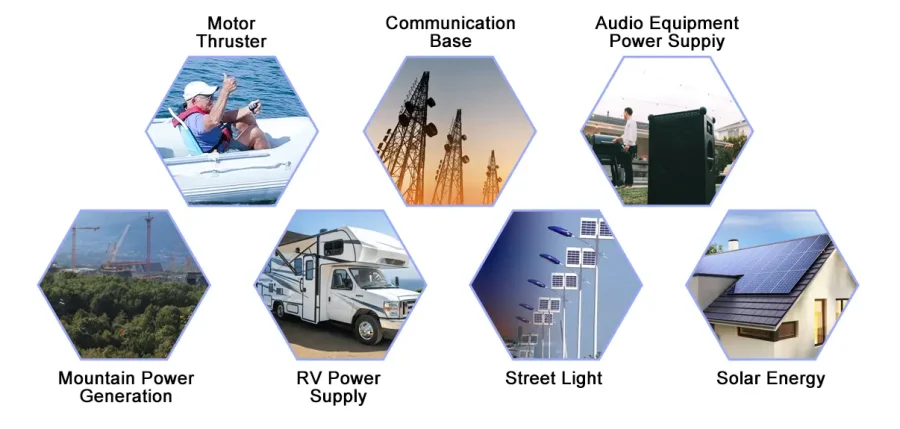
The Future of NMC Battery Technology and Market Trend
The global ternary lithium battery market is experiencing significant growth. According to the report from GM Insights, the global nickel manganese cobalt battery market is expected to grow from USD 35.6 billion in 2025 to USD 123.4 billion in 2034. The future market trend of NMC batteries is demonstrated in the performance improvement and application expansion.
NMC battery technology reflects high nickel content and a single crystal to improve energy density and stability. For the NMC battery market, its high energy density feature ushers in new growth opportunities in emerging fields such as embodied intelligent robots and eVTOL that have strict requirements on lightweight and endurance.
Conclusion
NMC battery leverages great potential in wide applications, such as marine, robotics, energy storage, and electric vehicles. It boasts high energy density, long cycle life, and fast charging, delivering more power to prolong the device’s operating time. However, the NMC battery has shortcomings of thermal runaway safety risk and high cost. Thus, effective battery protection technologies are essential for enhancing safety.
CM Batteries is a reliable lithium-ion battery manufacturer, specializing in customizing NMC battery packs. Our intelligent BMS, immersive cooling system, and high-temperature resistant battery technology monitor battery temperature in real time and protect the battery from short circuit and overcharging. If you have any requests, please contact us.
FAQs about Lithium NMC Battery
Do NMC batteries have lithium?
Lithium NMC batteries are a type of lithium-ion battery, using ternary material as cathode material, such as lithium nickel cobalt manganese oxide. During the battery’s charge and discharge process, lithium ions move between during electrodes.
Is NMC a lithium-ion battery?
Lithium-ion batteries refer to the use of metallic lithium compounds as the cathode. Ternary lithium batteries are a type of lithium-ion battery that uses lithium nickel cobalt manganese oxide or lithium nickel cobalt aluminum oxide as the positive electrode material.
Which battery is better, LFP or NMC?
NMC batteries and LFP batteries have their advantages. If safety, affordability, and durability are key, and daily commuting is a vital focus, LFP batteries are a safer choice. If high performance and fast charging are desired, NMC batteries are a better choice.
What is the best charging for NMC li ion battery?
Recommended charging between 20%-80% range. In daily use, charge the Li-ion NMC battery immediately when it drops to around 20% to maintain battery health. Charge to 80%-90% to avoid prolonged full charge to reduce overcharging risk.
What is the difference between prismatic and cylindrical NMC batteries?
Prismatic ternary lithium battery offers advantages in space utilization, energy density, and customization, and is suitable for scenarios that are sensitive to volume and require personalized design. Cylindrical ternary lithium batteries perform well in standardization, mass production efficiency, and heat dissipation, and are suitable for scenarios with high consistency requirements and large-scale series and parallel connections.
What is a 18650 NMC battery?
18650 NMC battery is a lithium-ion battery using a nickel-manganese-cobalt (NMC) chemistry. Its name is from its size: 18 mm in diameter and 65 mm in length. This type of battery is used in electric vehicles (EVs), laptops, power tools, and energy storage systems due to its high energy density and reliability.

